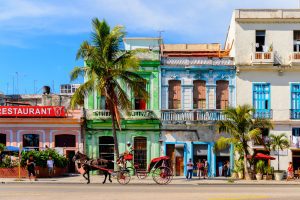According to the Global Cities Initiative, there are 7 different types of cities today.
123 of the most economically-powerful cities have been analyzed by this Brookings initiative to unveil the type of cities that drive innovation, culture, and economic growth. Here are the 7 categories.
Table of Contents
1. Global Giants
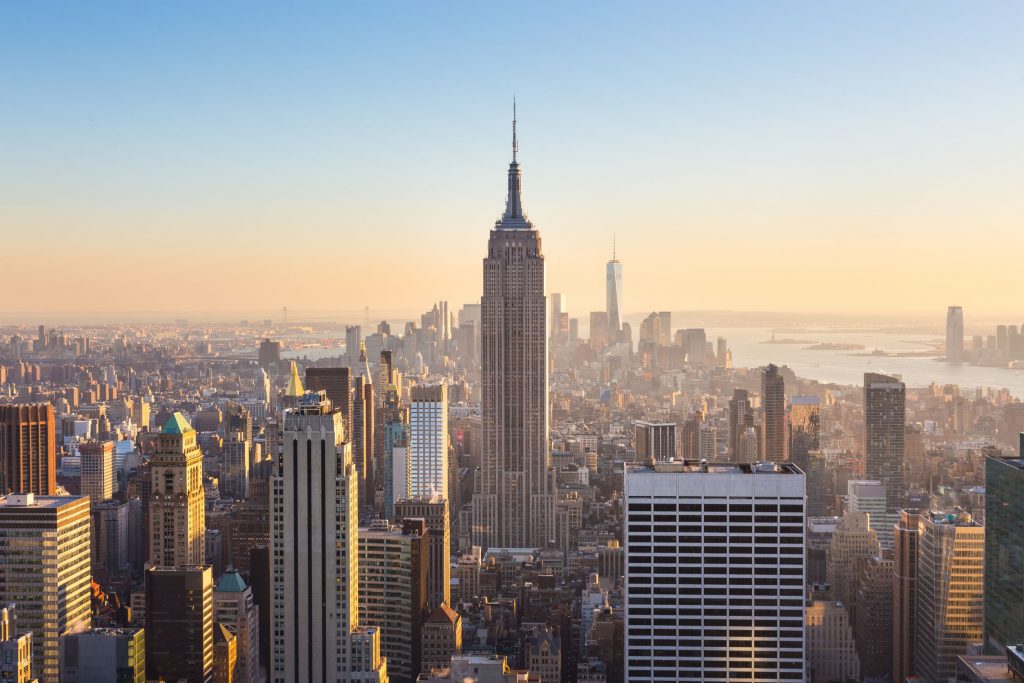
Global giants are the megacities of the world. Only 6 cities are part of this category which goes to show just how competitive large cities truly are. New York, Los Angeles, Paris, London, Tokyo, and Osaka are the Global Giants.
Economic growth such as GDP, GDP per capita, direct foreign investments, and innovation are the main criteria by which these cities have been selected.
New York – Global Giant megacity
New York is the first Global Giant. The city had a GPD per capita of $75,131 per year. Much of this GDP comes from the finances, tech, and biotech fields.
Other factors such as access to top-tier higher education, culture, and the world’s largest talent pool also made the city the true global giant of the moment.
Wall Street and financial trading is the most important engine growth of the city. This is the largest stock exchange in the world.
Wall Street is home to multiple financial institutions. It’s believed more than 160,000 people work here. This makes the financial sector responsible for 5% of the private sector jobs in New York.
Many Fortune 500 companies are based here. JP Morgan Chase, Citigroup, MetLife, and Goldman Sachs are just a few of the companies headquartered in New York with a large involvement in the international stock exchange market.
The tech field is also rapidly growing in New York. It rivals the classic Silicon Valley with its Silicon Alley and it creates an area for startups and tech innovation employing tens of thousands of people from all around the world.
Access to top talent is also impressive here. While Harvard and Oxford Universities are far from here, the city still has the best research ratio in higher education than other global cities.
Columbia University, Barnard College, and the New York Institute of Technology are all higher education institutions found here. The city does a great job at training and retaining top-tier talent from these institutions.
Transport links are also assessment criteria for the 7 types of cities. New York has excellent transport routes, mainly through its airports which connect the US to the rest of the world.
A vast metro system and plenty of alternative transport methods make the city a global leader in commuting and international transportation.
This is why most of those working in finances in Manhattan can easily make their way to work from any part of the city.
Some of the best airports in the world are also based in New York. What impresses the most is the way they are organized as millions of people arrive or depart from New York every week.
This makes it one of the few international air hubs that can routinely deal with high air traffic. This also makes the city the perfect location for multiple large-scale events from sporting events to large tech conferences.
Another segment that separates cities is innovation. New York has a large number of innovations per capita from the early 70s. The city invented both the cell phone and credit cards.
It’s no wonder it drives innovation in communication and finances for the rest of the world.
2. Asian Anchor Cities
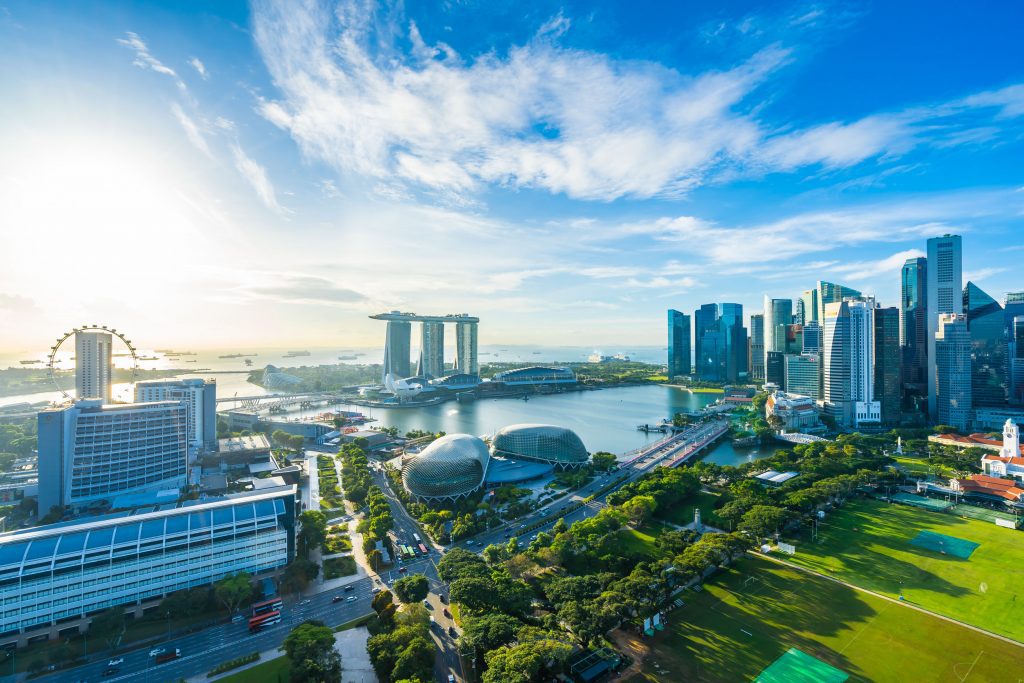
Asian Anchor Cities closely follow the Global Giants. These cities aren’t as wealthy but they also feature fantastic infrastructure and great access to a talented workforce.
These cities are Singapore, Moscow, Hong Kong, Seoul, Shanghai, and Beijing. All of them are now international cities with direct foreign investment at an all-time high.
For the list, we’ll take a closer look at what makes Singapore the most representative Asian Anchor City.
Singapore – the leader Asian Anchor
Singapore is a vast city with a large population but situated on a small island that might stop its future growth. At the moment, this is the true international Asian air hub.
Most flights to South East Asia go through Singapore. Even if you want to fly from Europe to Australia, you are likely to make a stop in Singapore.
3 main airports make this Asian Anchor so important for the entire region.
Since the number of cars on the road seemed problematic, Singapore even decided to curb vehicle numbers in favor of alternative transport methods such as trams, trains, buses, and taxis.
This is the lifeblood for the city of millions.
Singapore has the second largest GDP per capita in the world, just behind New York. Various industries make the city as important as it is.
Singapore Airlines is the most recognized name here even if there are more than 7,000 multinational companies in the city. All of them employ hundreds of thousands of people making it a top city with a low unemployment rate.
Electronics, petroleum, banking, and manufacturing are the strongest economics here. The city is considered a strong financial hub through its banks.
Some even went as far as to say Singapore banks acted the best in the world during the latest economic crisis.
But a city of such importance cannot exist without innovation. Critics say Singapore aggressively promotes its biotechnology investments.
International pharmaceutical giants have already invested in Singapore.
GlaxoSmithKline, a British pharma player employs thousands here. Pfizer also has investments of hundreds of millions of dollars in Singapore only during the few couple of years.
The production of vaccines even before Covid-19 was of high interest in the city.
Singapore might be smaller than New York, but this city is one of the main trading partners of the US. This speaks volumes of just how much trading goes through the city.
Many goods and finances are traded around the world with Singapore.
When it comes to naming a single top-tier partner, it seems Malaysia is the best trading partner for Singapore with their ties only looking to get better in the future.
The GDP per capita of Singapore sits at around $64,000 per year. This is not too far from New York. It’s one of the reasons many local talents stay here, even if many specialists in the city now come from abroad.
Part of this high attraction standard of the city is given by its high number of students and universities. The National University of Singapore has over 40,000 enrolled students.
The Nanyang Technological University enrolls more than 60,000 students. Even The Singapore University of Social Sciences enrolls more than 14,000 students.
Part of the success of these higher education institutions is their investment in research. We know that innovation plays a large role in how different types of cities are categorized.
For Singapore, quick access to world-class academics is an opportunity.
The language also plays an important role in the history and future of Singapore. Its residents live in 2 cultures by languages as the main spoken languages here are English and Mandarin.
With direct communication opportunities both to China and to the English-speaking world, Singapore can become an even large city.
Its size is limited by investments in biotech, engineering, banking, and other financial services are all areas of potential growth in the future.
3. Emerging Gateways cities
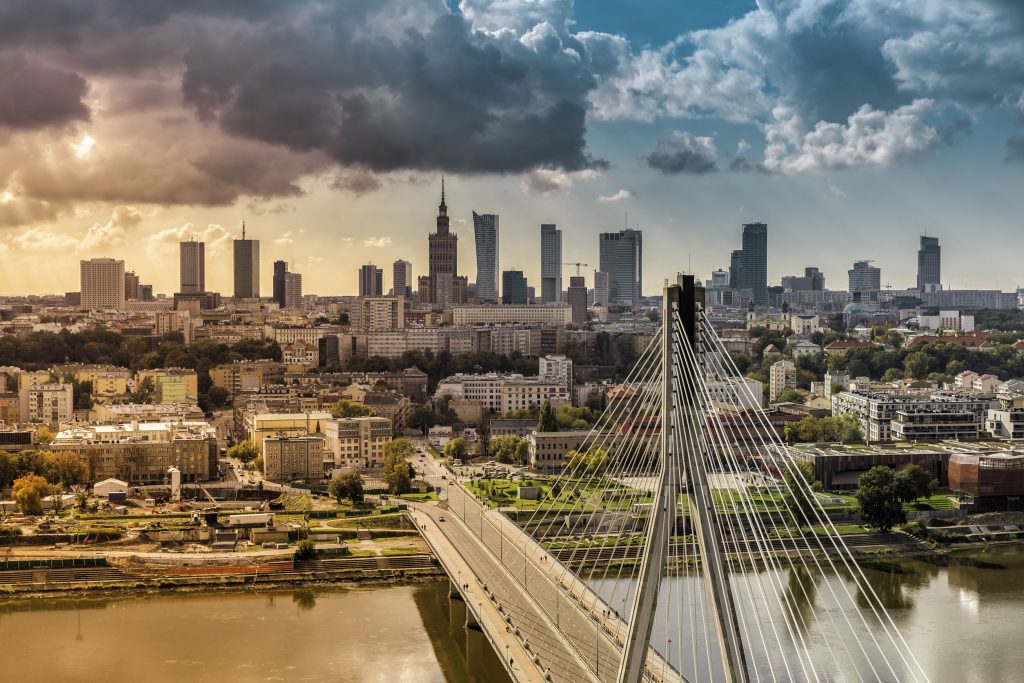
Middle economy cities around the globe are part of the Emerging Gateway cities category. These aren’t as prominent as global cities but they play an important regional role in business and transportation.
28 cities around the world are part of this Emerging Gateways category.
Warsaw, Shenzen, Guangzhou, Busan Ulsan, Tianjin, Saint Petersburg, Rio de Janeiro, Santiago, Mexico, Johannesburg, and Ankara are just a few of these prominent cities with a notable business and transportation scene.
Warsaw is the most capable Emerging Gateway city
Warsaw is the capital of Poland and the strongest Emerging Gateway. Its local GPD per capita of more than $50,000 per year makes it a top middle-level city with considerable growth potential.
It has the highest GDP in the country and the highest in the region. Eastern European cities might not be as successful in the following years.
The following section looks into what makes this city such a strong example of how an emerging economy should look like.
- The business scene in Warsaw
Warsaw is located within the Eastern border of the EU and of Europe. It has a crucial role as its proximity to Germany and Slavic influences make its residents speak multiple languages at a fair to fluent level.
Shared services are highly present here as are outsourcing services.
The business scene in the city is booming and hard to report as it changes rapidly. The city is the engine to Poland’s economy (the fastest growing in the EU where Warsaw represents 1/6 of its total GDP).
Poland has been the main state to benefit from EU funds in infrastructure and economic development. It has been steadily growing since 1992 which is the background of what the city of Warsaw represents today.
A large local market with millions of consumers and a positive impact of migrants made this city even stronger.
It gets a highly educated population that likes to spend as the retail scene here catches up to the one in Western Europe.
Migrants largely come to form neighboring Ukraine and their labor market integration is fast which helps the city further.
- Foreign investment in Warsaw
Foreign investment in the city is at an all-time high. We’ve seen Warsaw become a major industry player over the years following WW II as the state decide to get involved in areas such as steel manufacturing and automobile building.
But today, Warsaw also makes consume goods for Poland and much of Eastern Europe.
Procter & Gamble, Accenture, PWC, Google, Microsoft, AstraZeneca, Nestle, and Goldman Sachs are just a few of the notable international players employing thousands here.
All of these companies work in outsourcing or research and development alongside manufacturing.
- Transportation gateways of Warsaw
Warsaw is the transport link for Central and Eastern Europe. It has 2 large airports which serve almost 200 daily flights together.
Direct flights to major world destinations are a must here. You can easily travel to the cities Warsaw has the strongest economic links with from here.
The metro system in the city is rather new, something which can’t be said about Central and Eastern Europe.
With the first stops opened just a couple of decades ago, the new and efficient metro system connects the most important areas of the city.
The tram system here is one of the largest in the world.
It has a length of over 130 km and it has been largely redeveloped with EU money offering locals an excellent public transport alternative in an area where many would expect to simply rely on personal cars to travel to work.
A system of highways is also increasing in Poland and Warsaw is the main destination of these roads.
It’s estimated that express roads, bridges, and highways to further connect the city to the rest of Europe and increase local mobility standards until 2030.
Foreign investment is at an all-time high in Warsaw, particularly from the EU. But US-based companies also have a large presence here.
The rise of the local universities ensures the constant growth in numbers of those willing to work in finances, IT, manufacturing, and neighboring agriculture businesses.
The influx of high-trained migrants from Ukraine also makes this the most attractive city in the region. Its highly skilled workforce also produces higher value goods which translate into a higher GPD.
Warsaw even has a higher GDP per capita than Shenzen, a city tied to the high Chinese economic growth of the past decades.
4. Chinese Factory Cities

Chinese Factory Cities are non-other than second-tier and third-tier cities in China that largely invest in exports to fuel their economies.
Known as manufacturing hubs, these cities have an income well above the national Chinese average. They are such important global manufacturing players that this category of cities has only been created for them.
However, these cities are the least likely to progress to a higher status in the future. They lack innovation, access to highly-skilled diverse talent, and they also lack the transport infrastructure to match Emerging Gateway cities.
There are 22 Factory Cities in China. They include Wuxi, Dalian, Suzhou, Chengdu, Dongguan, and others.
While they can’t rival the big players in the country, these cities of millions still produce many goods that get shipped around the world.
Wuxi – a manufacturing city
Wuxi is one of the historic cities of China, a cultural hub, and a city of manufacturing and exports. It has been traditionally known as a textile player in China and even internationally.
But this city with a population of just over 3.5 million has changed its outlook on industrialization.
As a major industrial hub, Wuxi has created a GDP of over $19 billion, which is still more than many other similarly-sized cities around the world.
This has been achieved by the creation of a large industrial park covering more than 200 square kilometers. It’s here that many manufacturing players settled.
Manufacturing is key in the industrial park. From the classic textile manufacturing such as clothing, the city is now shifting towards making motors, bicycles, and solar panels with their components. Pharmaceuticals are also made here.
Some of the most notable players in the industrial park are Jetion Holdings and Suntech Power solar energy companies.
Suntech Power holds manufacturing plants abroad. It even made solar panels in Arizona but it closed its plant in 2013 following economic hardship.
However, you might have seen the company’s products around the world as it created solar energy panels for some of the most prominent cities and edifices around the world.
Its solar panels are used by the Beijing National Stadium. They are also seen in the Nellis Air Force Base and at Arizona State University.
The city is currently trying to invest heaving in new manufacturing lines. These would increase production capacity considerably.
To a lesser extent, it also tries to invest in innovative companies such as those in biotechnology.
It has direct investors, mainly from the US, and is actively seeking more investment to get these additional industries to increase their role in the current city climate.
Transportation links are improving in the city. A new metro system is being built since 2004.
It only covers a small surface of the city but it’s expected to be ready within a decade so that it covers vast areas which would make transport easier.
There’s a large local airport within 10 minutes of the city as well.
It connects Wuxi to major China destinations and it has been one of the regional airports that survived in time as many others in China failed to see the passenger travel needed to maintain operation.
However, the airport also limits its international potential. There are only a couple of international destinations connected to Wuxi. One of them is Vietnam.
This considerably limits the ability to see tourists, international students at the merged local universities, and easy access from international investors.
5. Knowledge Capitals

Knowledge capitals are innovative cities with a focus on university research.
They have been categorized mainly by patents per 1,000 inhabitants and they represent some of the best cities to work in if you want to build a career in research.
Most of these cities are in the US. 3 others (Zurich, Amsterdam, and Stockholm) are in Europe.
San Jose – the most important knowledge capital
San Jose ranks first for patents per 1,000 inhabitants and share of publications in the top research papers. The concentration of tech giants around the city of San Jos led to its nickname of ‘Silicon Valley’.
Students and specialists come here every year from universities such as the University of California, San Jose State, or Stanford University.
It’s no wonder the city and its neighboring area produce more patents than any other city in the world. Many top-level companies are headquartered here.
Adobe, Cisco Systems, IBM, HP, Zoom Video Communications, and PayPal are just a few of the companies found here. These are all innovative companies in their fields and are even considered world leaders at times of their existence.
As a role of a global innovator, the city of San Jose gave the world many interesting inventions for which it holds patents. The first inkjet printer was designed here.
It changed consumer-level printing forever, making it simple and affordable.
Microprocessors have also been invented here for the past 3-4 decades regularly. Tech giants here made microprocessors faster, smaller, and more efficient.
They led the digitalization path for most companies around the world. Lasers have also been invented here.
Different types of lasers are used today from the heavy industry to the medical field. These lasers are used in linear accelerators and other research gateways into the health field such as cancer treatments.
Social media giants are also found here. Facebook and Instagram have been some of the most popular social media platforms even if they weren’t the first in the world.
These tech giants eventually became so big they had to hire entire teams to edit user content following multiple political and social scandals.
However, they also facilitated communication between users, even if they didn’t pioneer web-based communication systems.
But the history of innovation here is far longer than the millennial digital revolution. Giant companies here were responsible for some of the first consumer-level tech we’ve seen in your homes.
For example, not many know the VCR and videotapes have been invented here.
The city itself is growing but it remains small and specialized. Unlike the Chinese factory cities, it has excellent international links through its air travel companies at the San Jose International Airport.
It connects the city and its companies to Tokyo, London, Mexico, Frankfurt, Beijing, Vancouver, and Shanghai. The city is also connected to major US destinations.
6. American Middleweight Cities
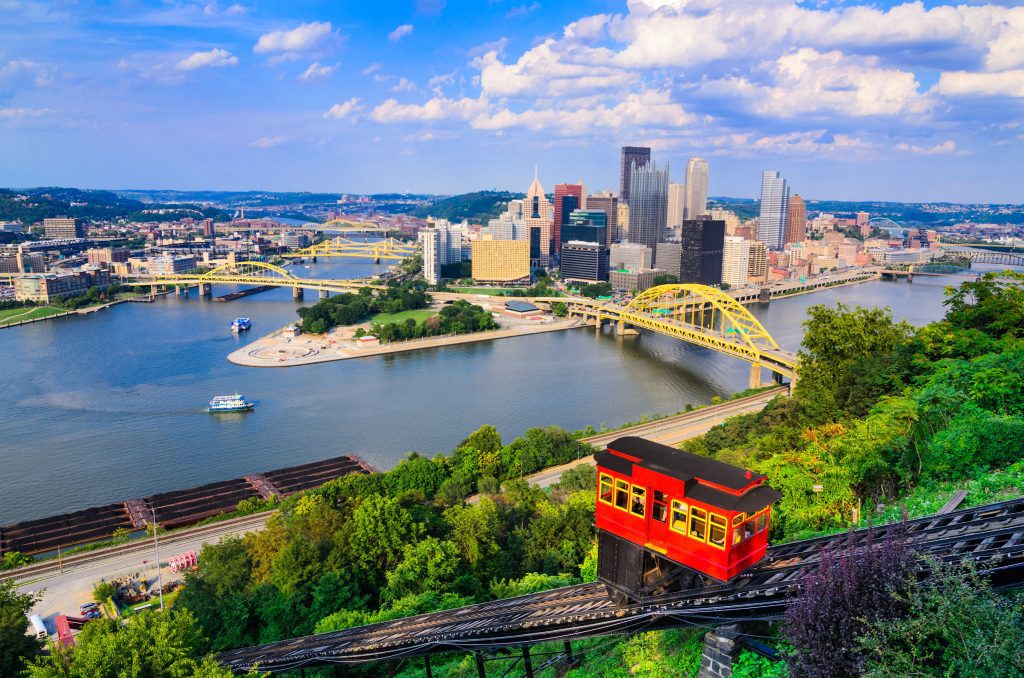
These cities are relatively strong, located in the US, and determining in their universities and high institutions standards. These cities include Pittsburgh, Sacramento, Miami, Indianapolis, and others.
Pittsburgh – the leading American Middleweight city
Pittsburgh has been surprisingly named as the best city in this class. For a municipality with only 1.78 million people, the city managed to create higher education and highly skilled jobs like no other US city this size.
The payroll for its largest companies exceeds $10 billion which makes it a strong city with high growth potential.
Nobody believed in the American Dream in Pittsburgh after most of its heavy industries closed decades ago. Healthcare, higher education, and technology are the main areas of economic growth and research power in the city.
The hospitals in the region employ more than 110,000 people, making it a very good city for healthcare research and general healthcare work. It’s no wonder the unemployment rate here is so low, generally under 4%.
You can always tell which US city has excellent economic prospects by the number of Fortune 500 companies it has. Pittsburgh has 6 such companies. US Steel is one of these large companies in the city.
The company was so successful that it eventually expanded into the mining and oil business.
Indianapolis – a close Pittsburgh rival
Since the end of its industrial era, Indianapolis struggled to find its path. Today, it’s one of the top middle US cities with a GDP of over $134 billion.
This city nearly matches Pittsburgh in high skilled worker numbers as well as in economic development.
There are 3 Fortune 500 companies located in the city. Most of the large companies of Indianapolis are in the pharmaceutical, finance, insurance, and real estate.
Its downtown area is where most of these companies are headquartered. Over 40,000 jobs are created per square mile here, making it the best city in the state to find a job and to get good at it.
However, the city struggles when it comes to catching up to the rest of the large metropolitan areas of the US. GDP per capita remains lower here than in other large cities, even if it is the highest in Indiana.
The jobs here are rarely independent of what happens nationwide on a political level. Many locals don’t like job creation to be as dependent on national financial status.
One of the areas which aren’t directly impacted here is healthcare. Indianapolis serves as a major healthcare hub for those living in the state and for residents of other states.
It is estimated that over 28 million hospital visits are seen by Indianapolis each year. This pushes its healthcare further into innovation and into handling a large influx of patients.
All of these visits generate more than $5 billion which makes healthcare a lucrative field in this city.
Detroit – the fallen middleweight champion
One of the true examples cities can go back in economic development in Detroit. Once the motor capital of the country, Detroit is now struggling to offer jobs and good living standards for its residents.
This city has made the news numerous times over the past decade. It has the most abandoned buildings compared to many similarly-sized cities.
Part of its old-school charm and work enthusiasm is still there. Fortune 500 companies are still working in Detroit. The biggest employer is the Detroit Medical Center.
It hires more than 10,000 people making the city similar to Indianapolis when it comes to healthcare potential and investments.
The City of Detroit has 10,000 employees. Wayne University also employs a few thousand people. But the most emblematic company this type of city has is General Motors, a company which was responsible both for the rise and the fall of Detroit.
General Motors was the leading car manufacturer in the world up to 2007.
For more than 7 decades, it was the biggest automobile retailer and one of the companies responsible for automotive innovation, such as a commercial 2-stroke diesel engine.
The company went through major financial issues, mainly failing to keep up with the modern vehicle requirements of the modern driver.
Today, GM is trying to get higher up the world rankings by manufacturing vehicles both in Detroit as well as on most other continents.
The company is currently ranked 18th in the world by sales. Still, even such low rankings allow it to aspire for a better future given it has all of the support needed right in the city of Detroit.
Until General Motors gets back on track, Quicken Loans takes its spot as the company with the highest probability to gain economic growth.
Responsible for mortgage lending, it employs 17,000 people in the area of Detroit. It’s also one of the main companies of the city looking to relocate to the outer neighborhoods for even lower rents and to also be closer to its workers.
Many of these companies left empty spaces that are probably going to be used as innovative arts facilities as the new Detroit comes to life.
7. International Middleweight cities

Similar cities are also seen across the world. With a large human potential and with room for investment capital, these cities can become stronger in the future. Middleweight cities struggle to get over the last financial recession.
Signs of hope can still be seen in some of them. Pert, Munich, and Amsterdam are some of the 26 International Middleweight cities that close the list of different types of cities by economic power.
Perth – the isolated International Middleweight
It’s only the remoteness of this Western Australian city that holds it back today. With a $40 billion yearly net value, this city is mainly producing goods for the locals such as food and construction materials.
It rarely makes any exports due to its remoteness. But the city is growing in services, healthcare, and banking. Tourism is also growing here. More than 200,000 people visit Perth each year.
One of the reasons why Perth has high growth potential, even above other types of International Middleweight cities is its top-tier universities.
There are more than 30,000 students in Perth. 20,000 academic staff ensure these students have access to some of the best teaching methods and research isn’t far behind when it comes to academic interest.
However, Perth still relies on much of its industrial era finances. This can be seen in the dominance of its mining sector.
Mining equates to 40% of the city’s economic output which makes it an interesting place for raw materials, much more than similar cities of this category such as Munch and Amsterdam.
Munich – a city with high potential
Munich has a high GDP per capita of more than $80,000 placing it among the top world cities for direct local, national, and foreign investment.
It’s one of the few International Middleweight cities with a diverse economy that doesn’t exclude manufacturing.
Some of the biggest local players are companies in the manufacturing space, creating thousands of jobs for locals and internationals. Furthermore, some of these companies are leaders in their fields.
Siemens (electronics) have manufacturing facilities here. BMW, one of the biggest car manufacturers in the world is also found here.
It now has operations across Germany, Europe, Asia, and North America. MAN is one of Europe’s largest truck manufacturers.
It pioneers technologies in engine manufacturing and driving safety and it’s also headquartered in Munich.
Its transport links are also some of the best in the world. A fast metro system, trams, buses, and taxis make this city viable for work and business.
It also has one of the busiest airports in the region. Preferred links include London with over 1 million direct passengers per year and Amsterdam or Paris with a similar number of passengers.
Many airlines see Munich as a major interest hub. This is why more than 700,000 passengers fly between Munich and Dubai each year.
US ties are also very strong with Lufthansa being one of the oldest European companies to offer direct North American flights.
Over 350,000 people come and go between Munich and Chicago each year. This connects 2 of the most prominent vehicle manufacturing locations in the world.
Both Munich and Chicago (particularly Detroit) have a word to say about how cars and trucks look and operate today.
Other North American routes are also popular in Germany. You can fly to Vancouver from Munich. But you can also fly to Los Angeles, Washington, Boston, and Denver, making it one of the main hubs for US flights.
Bangkok, Delhi, and Hong Kong are some of the longest direct flight routes of the city. With plenty of room for growth, Munich is one of the biggest players even if it’s situated far from the German capital of Berlin.
Amsterdam – constant economic influence
Amsterdam isn’t very interested in manufacturing and it focuses on services. The city is a leader in banking services. ING, one of the world’s largest banks is headquartered here.
It leads operations for individuals and businesses in many countries across the globe.
The tech revolution is also of high interest for Amsterdam. Certain tech players such as Booking.com have headquarters here.
These employ thousands of people bringing in staff from around the world to offer localized versions of its online booking system and website.
TomTom is another tech giant present in Amsterdam. It produces navigation systems and its instantly recognized as one of the world leaders in this space.
TomTom employs around 5,000 people and it’s estimated to reach a yearly revenue of $1 billion over the next few years.
Schipol is Amsterdam’s airport and one of the largest in the world. It offers direct flights to Chicago, Houston, and Washington. KLM, one of the largest airlines based in Amsterdam also offers flights to Los Angeles.
Transportation used to be important in the country’s history and this can also be seen in how KLM tackles travel today. The large airline is one of the most important in the world.
It employs nearly 40,000 people and has a yearly revenue of more than $12 billion.
KLM also has a few subsidiaries such as KLM Asia and Transavia. All of these play their role in the economy of Amsterdam.
The city’s limited financial growth prospects in the manufacturing world can be balanced by those in banking, IT, and transport services. It’s expected for KLM to grow its list of international destinations.
The access to high-quality education also makes Amsterdam a capital that speaks good business-level English, some argue above the levels of Munich.
This opens up its trading potential further. However, its limited population growth will never make it a megacity. Instead, it can hold a specialized role and act as a trading hub between the world and Europe.
Final words
Not all large cities can be included in these 7 categories. Brookings’ report officially shows other large cities that could have been considered for these categorizations.
However, these cities aren’t competitive enough to sustain a high-level economy. Jakarta, Cairo, Lagos, and even Dubai don’t have the combined elements to be on the list.
Other large cities such as Tehran are even further from the standards of these categories which also take GDP per capita and access to innovative education into account.
Furthermore, being a trade cluster and a city with quick access to top talent makes it harder for some of these cities to make it into the Brookings report.
While cities can be divided further by other criteria, it’s their competitive nature that splits them into 7 categories from megacities to important middleweight cities.
All of the cities under these 7 categories also have excellent connectivity to the rest of the world. This is the last criteria of the research and one of the most overlooked.
Even middleweight cities such as Amsterdam have world-class connectivity to other countries and continents.
Brookings, the company responsible for creating these categories or types of city standards also maps out a path towards international success for small cities.
It cites exports as the main criteria for a small city to reach middle market status.












